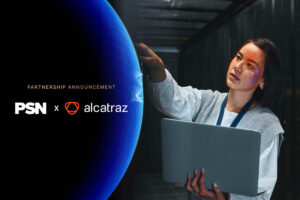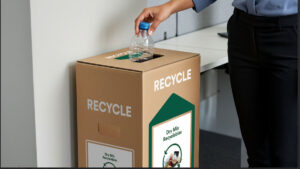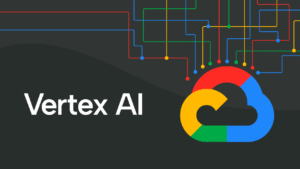Modern Ways to Connect Field Staff with Central Office Systems

Connecting staff in the field with central office systems is more important than ever. As organisations adopt hybrid work models and operate across various locations, the ability to provide secure and efficient access to essential applications has become critical. Traditional office-based setups no longer meet the needs of employees who rely on mobile devices and flexible schedules. To stay competitive, businesses must adopt smarter methods for remote connectivity that enhance efficiency without compromising security.
Adapting to Evolving Field Connectivity Needs
The nature of fieldwork has changed dramatically. What once involved basic access to email or file servers now requires full integration with internal applications and databases. Employees working on-site or on the move often need real-time access to CRM systems, job management platforms, or industry-specific software.
This shift demands a fresh approach. Security concerns are heightened when data is accessed from various devices and environments. Staff may be working from customer premises, personal laptops, or tablets in less secure networks. Compatibility challenges also arise when these devices run different operating systems or software versions.
As a result, many organisations are now prioritising choosing remote desktops tools like TSplus Remote Access to bridge these gaps. Unlike older methods that rely on direct network connections, these tools deliver a more seamless and controlled experience. By allowing centralised application access from any authorised device, businesses can improve agility while keeping systems protected.
How Technology Supports Flexibility and Control
Modern solutions go beyond traditional VPN setups. While VPNs connect users to internal networks, they often struggle with performance issues, particularly when running complex applications remotely. This has led many IT teams to focus on remote desktop technologies that can stream applications or entire desktops directly to end-users.
Using remote access software, staff can interact with their usual tools as if they were working from the office. This centralised model keeps data securely housed on company servers, limiting the risk of local file exposure. It also simplifies updates and version control since changes only need to be made in one place.
Different solutions offer varying degrees of flexibility. Some support full desktop environments, while others allow application-specific access. By selecting the right model for each user type, companies can ensure field workers have what they need without unnecessary complexity.
Solutions such as TSplus remote access offer streamlined controls, which make them especially appealing to small and mid-sized businesses. These platforms provide compatibility with different devices, adapting the experience whether staff use laptops, tablets, or mobile phones.
Enhancing Security and Compliance
Security plays a vital role in any remote strategy. With employees accessing systems from outside the company network, the risk of data breaches or unauthorised access increases. To counter this, remote desktop software integrates encryption protocols and access restrictions that keep information secure during transmission and while in use.
Authentication processes, such as two-step verification or biometric access, ensure that only authorised users can log into systems. These checks can be tailored to balance security with convenience, helping staff remain productive without navigating overly complex login steps.
Session management features add another layer of protection. By automatically closing inactive sessions or limiting usage to specific timeframes, organisations reduce the likelihood of unauthorised activity. This is especially helpful when staff share devices or connect through temporary access points.
Compliance is another major consideration. Organisations in sectors such as healthcare, finance, or government must follow strict data handling rules. Remote desktop solutions assist with this by keeping sensitive data within company infrastructure and enabling detailed access logging.
Application Publishing for Field Efficiency
Not all staff require full desktop access. In many cases, field engineers, technicians, or delivery drivers only need a handful of applications. Application publishing provides a focused solution for these users. Rather than launching a complete remote desktop, they are granted access to specific tools only.
This approach reduces bandwidth usage, improves connection stability, and enhances user experience. It also minimises distractions, allowing field staff to concentrate on tasks without navigating full system environments. IT teams benefit as well, since fewer applications need to be maintained or updated for each user.
Where broader access is necessary, full desktops can be provisioned. Supervisors or technical specialists may need to use accounting software, collaboration platforms, and file management tools. Remote desktop platforms allow organisations to provide different levels of access based on role requirements.
Mobile-Ready Strategies That Work
Mobile compatibility is now a must. Field staff rarely work from traditional laptops alone. Many rely on smartphones or tablets, which require interfaces optimised for smaller screens and touch controls.
Browser-based remote access through HTML5 is a popular solution. Staff can log in using any modern browser, without needing to install additional software. This approach removes compatibility concerns and speeds up onboarding, especially when staff are using personal devices or temporary setups.
Field conditions are rarely ideal, so remote desktop software must also handle disruptions gracefully. The best tools maintain session stability when connections fluctuate and provide options to reconnect automatically. Offline modes or local caching can help users continue working if connectivity is lost temporarily.
Achieving the Right Balance Between Access and Safety
Security features must not compromise usability. When access controls are too rigid or login processes too complex, staff may try to find shortcuts, exposing systems to unnecessary risks. Designing user-friendly access methods is critical to maintaining protection while ensuring operational efficiency.
Custom policies can help. For instance, users connecting from familiar locations or company devices might benefit from reduced authentication steps, while those logging in from unknown networks may face additional checks.
Integrating remote access tools with existing identity platforms supports secure single sign-on capabilities. Staff log in once and gain access to all permitted systems, improving workflow without reducing safeguards.
Ultimately, user experience planning must be part of any security design. Engaging staff in feedback helps IT teams create policies that support both company requirements and employee needs.
Empower Your Field Teams with Smarter Remote Access
Reliable, secure, and user-friendly access is no longer a luxury for field staff. As organisations embrace more flexible work arrangements, choosing the right tools for connectivity becomes essential.
By deploying remote desktop solutions that match specific roles and environments, companies can ensure their workforce remains productive and protected. With careful planning and the right technology, connecting field staff with central office systems becomes a streamlined process that supports long-term growth and operational success.




